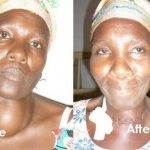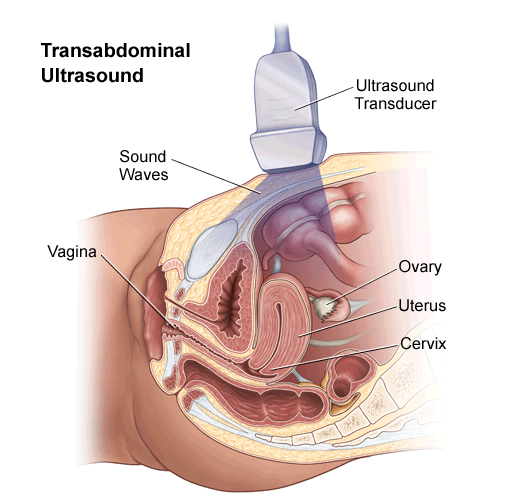A reader who happens to be a nurse in one of the hospitals in Nigeria writes to get information about the modalities of goitre treatment and the complications of thyroidectomy or goitre surgery.
Read Below….
My Doctor good morning, my name is Funke, a nurse in one of the hospitals in Lagos Nigeria.I had this neck swelling which was noticed by younger brother 2 years ago. I immediately suspected it was goitre. But how come I have goitre? I eat iodized salt, none of family members has had to go to the hospital for goitre treatment before and I am not from the goitre belt in Nigeria made up of states like Kogi, Niger, Edo, Nigeria, Abuja, Delta, Cross Rivers, Ebonyi, Anambra, Imo, Abia, Enugu, Kwara, Ondo, Lagos, Oyo, Ekiti and Osun (from what I googled). Anyway, I went to see the Endocrinologist in the hospital where I work. She interviewed me, examined my neck and thereafter made a diagnosis of goitre just as I suspected earlier. The neck swelling was still not very much noticeable unless you look closely. She told me to do a thyroid function test and a thyroid scan which I did. The thyroid function test was deranged with elevated T3 and T4 but decreased thyroid stimulating hormone (TSH).
The thyroid scan showed I had a multinodular goitre. Before now I noticed I was sweating too much, getting cold easily, having diarrhea, muscle weakness or cramps, having menstrual irregularity compared to before, and sometimes become unnecessary anxious or agitated.
My doctor after seeing the results and explaining them to me placed me on some anti-thyroid drugs like diazepam, cabimazole, propanolol, and propiothyuracil (PTU). She counselled me on the side effects of goitre drugs and told me to ensure I add iodized salt to my meals. I started taking the drugs immediately but I noticed the goitre started growing rapidly inspite of treatment. 18 months later I was having pressure symptoms like difficulty swallowing, change of voice and breathing problems.
I went back to my doctor and she was shocked when she saw me because of the large size of my thyroid gland. She immediately referred me to a general surgeon who requested I do a fine needle aspiration cytology for histology so as to rule out thyroid cancer. I went for the procedure and to God be the glory it was not cancer. The surgeon told I needed to go for thyroidectomy immediately to relieve the pressure symptoms, for aesthetic reasons and since medical treatment has failed.
I saw reasons with him and I have consented to the thyroid surgery already. I was told to pay the sum #250,000 Naira for both the thyroid surgery and this covers drugs, tests and hospital admission.
The doc, my surgeon has told me about the possible complications of thyroidectomy but I want to know more. Are there other thyroid treatment methods for my condition? I just need a second opinion. Thank you.
———Funke from Lagos——
My reply…
Thank you nurse Funke for reaching out. Persons with goitre pass through a lot. From stigmatization, pressure symptoms to high cost of treatment. Yes you may not come from the goitre belts in Nigeria where thyroid diseases or enlargement are endemic but some persons develop with is called ‘sporadic goitre’. When goitre occurs in an area where it is not endemic, it is said to be sporadic. Only a relatively small number of people are affected.
It may be caused by genetic factors, pubertal growth, pregnancy, lactation, drugs and the causes of endemic goitre. The sporadic goitre is pathologically and clinically indistinguishable from endemic goitre.
No straight to the point. From the symptoms you have described and the failure of the use of drugs for goitre treatment, surgery is now your best bet. The complications of thyroid surgery are discussed below…
They may be early or late.
Early Complications
1. Respiratory Obstruction/distress
It may be due to:
(i) Haemorrhage in the first 24 hours . Blood collects in the submuscular or subfascial space and compresses the trachea and/or pharynx leading to asphyxia. A corrugated rubber drain
is usually left under the pretracheal fascia to drain any blood that might collect there. But tracheal compression may occur in spite of it.
Treatment: The wound should reopened immediately by whoever is present to release the compressing blood clots.
Oxygen is administered and endotracheal intubation done,
recovery is delayed.
The patient is then taken to the theatre ana the bleeding points ligated under anaesthesia.
(ii) Bilateral abductor paralysis of the vocal cords from damage of the recurrent laryngeal nerves. Obstruction becomes evident as soon as the endotracheal tube is removed especially
if there is associated oedema of the glottis. Tracheostomy is urgent.
(iii) Tracheal collapse. This is common in very large goitres with pressure symptoms. The trachea may be weakened at the site of compression and collapses when the thyroid is
removed. Tracheostomy must be done.
(iv) Oedema of the larynx from trauma of the endotracheal tube: There is associated hoarseness and cough. Steam inhalation and steroids are beneficial but tracheostomy may at times have to be done.
2. Recurrent Laryngeal Nerve Paralysis leading to partial or total loss of voice
It may be unilateral or bilateral, transient or permanent. Unilateral paralysis results in hoarseness from abductor paralysis on one side.
It may improve with time as a result of compensatory abduction of the opposite cord. Bilateral paralysis causes respiratory obstruction leading to severe dyspnoea especially if there is oedema of the glottis. There is also aphonia.
Tracheostomy is urgent. Transient paralysis recovers in 3 montlrs and invariably in 9 months. If there is no sign of recovery after one year, arytenoidectomy with lateral fixation of one cord (Woodman’s operation) may be done to provide a good airway and some phonation.
3. Hypoparathyroidism
It usually occurs 2-5 days after operation and is due to trauma to and rarely removal of some or all of the parathyroids. It results in hypocalcaemia.
Warning symptoms are paraesthesia and numbness of the distal parts of the limbs and muscle cramps. Later, twitching or frank tetany and laryngeal spasm may occur.
Chvostek’s and Trousseau’s signs are positive and a low serum calcium confirms the diagnosis. 3-5ml of 10% solution of calcium chloride given intravenously promptly relieves the tetany. 20ml of 10% calcium gluconate given intravenously relieves the spasms in 10-20 minutes.
Oral calcium gluconate 6g t.d.s. and Vitamin D are continued and in many patients, only a short course is required as the damage is temporary.
4. Thyrotoxic Crisis
It is an acute exacerbation of thyrotoxicosis and occurs in
patients who are not euthyroid at the time of operation. It is therefore very rare now.
The patient is restless and may even be maniacal with profuse sweating, hyperpyrexia and tachycardia.
Treatment is with propranolol 20mg 6 hourly, diazepam or phenobarbitone, Lugol’s iodine and carbimazole.
Intravenous fluids are given to correct dehydration and cold sponging done
to reduce the pyrexia or fever. Oxygen may also be given.
5. Wound infection may occur.
Late Complications
1. Hypothyroidism
It occurs in about 10% of patients in 2-5 years. Replacement therapy with L-thyroxine is instituted.
2. Recurrence of Thyrotoxicosis
It may occur in up to 10% of patients in 1-4 years. Antithyroid drug therapy or radio-iodine is instituted.
3. Keloid scar is not uncommon.

Credit: BT mydonate
Please do not be discouraged or scared. These complications are very minimal or non-existent if goitre surgery is performed by a skilled surgeon. I wish you all the best.
























